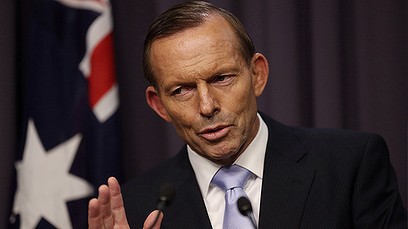Australian Prime Minister Tony Abbott insists that coal will be the primary source of energy in the future even as many signs point to solar power as having that distinction.
Recently Tony Abbott told an audience in Houston, TX that the fossil fuel will continue to stimulate progress for developed and developing nations alike.
Tony Abbott’s latest statement demonstrates the reason Australia has slowly been turning its back on new and renewable energy sources, even as the rest of the world embraces renewables.
Economist Warwick Smith is among the many critics of Tony Abbott’s insistence that coal and natural gas is the future for Australia. Smith says the government wants Australia to be stuck with 20th century power infrastructure and that the country’s leaders are doing everything they can to keep the economy too reliant on fossil fuel. He warns that the country will be left behind by other countries in terms of developing new and renewable sources of energy.
Tony Abbott’s Vision of Australian Energy Future
Tony Abbott has earned criticisms too because of flip-flopping on the issue of the Renewable Energy Target. Before the election Tony Abbott promised to look into the RET which ensures that 20 percent of the country’s energy comes from renewable energy sources like solar, wind, and hydro. Tony Abbott said the proposed revision of the RET is due to changed circumstances and a plan for Australia to become a superpower in cheap energy. He also reasoned that the Renewable Energy Target is causing a spike in energy prices.
These statements made by Tony Abbott run contrary to recent reports that rooftop solar panels are bringing down the prices of electricity in Australia, one of the sunniest countries in the world. In Queensland, a negative energy price was recorded at AUD -$100 due to low demand and high rooftop energy generation.
This is possible because it is mid winter in Australia where daily temperatures are tolerable. Households don’t consume as much energy in the early afternoon with peak demand happening in the mornings and afternoons.
Queensland Solar Power
Queensland is an example of a region in which solar power has made a lot of headway. There are thousands of households in Queensland with solar panels on their rooftops. Thus demand for electricity retailers plunge during sunny months. Across the country, it is expected that 75 percent of residential buildings and 90 percent of commercial buildings will have solar panels in their roofs 10 years from now.
Outside Australia countries and firms are embracing solar power and renewable energy. Electronics giant Apple has announced it plans to expand its solar power farm in North Carolina. Meanwhile China is looking to double its solar panel production by 2017.
American solar panel industry is also aiming at catching up with its Chinese counterparts. The stiff competition between China and the United States is projected to make solar panels more affordable over the next decade.
With the immense support that other countries are throwing at renewable energy sources like solar power many Australians are wondering why the coalition leader Tony Abbott continues to insist that coal is the future of power generation.

